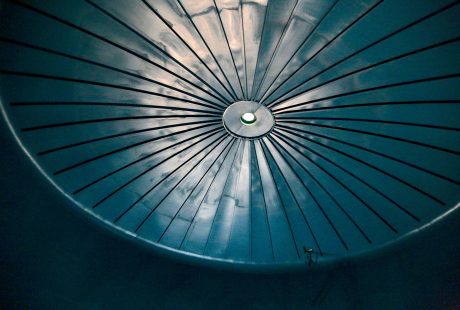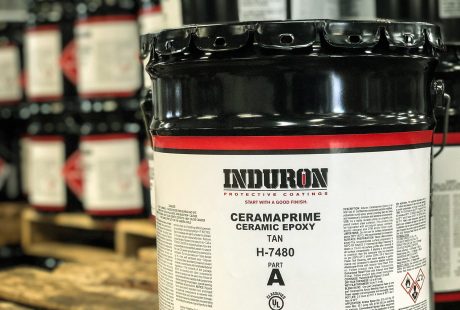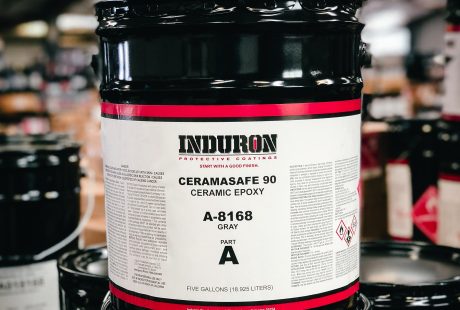By: Andy Odorzynski, Induron National Sales Manager
 Bringing innovative and unique technology to market can be a challenge. How do you show clients who have been doing things successfully that making a change is worth the effort? How do you explain the upgrade over the status quo? One part of this challenge is simply recognition. Are your partners aware you have something unique? The second part is harder: Do your partners understand why it’s unique and how it would help them? Answering these two marketing questions is one of the most important things we do at Induron.
Bringing innovative and unique technology to market can be a challenge. How do you show clients who have been doing things successfully that making a change is worth the effort? How do you explain the upgrade over the status quo? One part of this challenge is simply recognition. Are your partners aware you have something unique? The second part is harder: Do your partners understand why it’s unique and how it would help them? Answering these two marketing questions is one of the most important things we do at Induron.
If you have interacted with Induron’s projects, marketing or our people at all, then you have heard the term Ceramic Epoxy. Many of our partners can tell you Ceramic Epoxy is special, but we wanted to take a moment to talk about why it’s special and explain how it is an upgrade over the status quo.
Ceramic Epoxy Fact #1 – Let’s get this out of the way: Ceramic epoxy technology is cost equivalent to (if not cheaper than) what you’re doing now. The benefits listed below are designed to save money, not sell for a premium price.
 Ceramic Epoxy Fact #2 – The term “Ceramic Epoxy” refers to a unique pigment package that Induron adds to the epoxy technologies, which are already ubiquitous in our industry. If you have determined that polyamide epoxy, or cycloaliphatic epoxy (to name a few examples) is what’s best for your service, you don’t need to reevaluate that decision to utilize Ceramic Epoxy. Induron manufactures these high-quality epoxy technologies and adds the ceramic pigment package to impart a host of beneficial properties. We aren’t reinventing the wheel, but we are making it a lot better.
Ceramic Epoxy Fact #2 – The term “Ceramic Epoxy” refers to a unique pigment package that Induron adds to the epoxy technologies, which are already ubiquitous in our industry. If you have determined that polyamide epoxy, or cycloaliphatic epoxy (to name a few examples) is what’s best for your service, you don’t need to reevaluate that decision to utilize Ceramic Epoxy. Induron manufactures these high-quality epoxy technologies and adds the ceramic pigment package to impart a host of beneficial properties. We aren’t reinventing the wheel, but we are making it a lot better.
Ceramic Epoxy Fact #3 – The ceramic pigment package we add consists of hollow ceramic spheres manufactured in a range of sizes. When the film is applied to a substrate, you have a collection of larger and smaller ceramic spheres dispersed throughout the epoxy film. Ceramic spheres are not permeable to moisture vapor. Therefore, any moisture vapor that travels through the film must take a circuitous route around the spheres and through the epoxy resin. In this manner, a 15-mil thick film can perform more like a 25-mil thick film.
Ceramic Epoxy Fact #4 – Epoxy films are cross-linking, tough structures. That’s why we love them, and it’s the reason epoxy technology is chosen over weaker films. However, once a corrosion cell develops, the incredible cohesive strength of epoxy films can become more of an enemy than an ally. As corrosion develops, the corrosion cell will swell and break the epoxy film above it. We call this undercutting corrosion. Each time the corrosion cell breaks the film above it, a leading edge of fresh steel is exposed, and the cell can expand. This is precisely why we see corrosion expand from a single point out in a circle: the epoxy is so cohesively strong that it sticks to itself more powerfully than it can stick to the steel substrate. The Induron ceramic sphere pigment packages are specifically engineered to precisely lower the cohesion of the film below that of its adhesion to the steel. So, what does that mean? It means that when a small area of corrosion develops and begins to swell, the coating will shatter in that one location, without peeling back to expose new steel and allowing the corrosion cell to grow. In short, Ceramic Epoxy is the most effective coating in the marketplace for the mitigation of undercutting corrosion.
Ceramic Epoxy Fact # 5 – The ceramic sphere pigments are slightly alkaline in nature. This alkalinity creates a less hospitable environment for organic growth on the surface of the film. In water and wastewater service, even a small mitigation of such growth will have beneficial results for the life of the coating and the structure it is protecting.
 Ceramic Epoxy Fact #6 – Ceramic Epoxy can be applied at high film thickness without the use of plural spray equipment. While Induron does manufacture industry leading plural-applied 100% solids Ceramic Epoxies for those seeking to eliminate solvents and VOC’s, we are also able to offer incredible film build for standard airless spray. The hollow nature of Ceramic Sphere means that weight per gallon of our Ceramic Epoxy products is lower than that of traditional epoxy technology. This allows standard single-leg airless spray to achieve examples such as:
Ceramic Epoxy Fact #6 – Ceramic Epoxy can be applied at high film thickness without the use of plural spray equipment. While Induron does manufacture industry leading plural-applied 100% solids Ceramic Epoxies for those seeking to eliminate solvents and VOC’s, we are also able to offer incredible film build for standard airless spray. The hollow nature of Ceramic Sphere means that weight per gallon of our Ceramic Epoxy products is lower than that of traditional epoxy technology. This allows standard single-leg airless spray to achieve examples such as:
- TL-70 NSF 61 epoxy lining applied to a water tank interior at 15-20 mils DFT in a single coat
- Ceramasafe 90 applied to digester at 40 mils DFT in a single coat
Ceramic Epoxy Fact #7 – Ceramic Epoxy can help keep our workforce safer. Moisture-cured, urethane zinc-based primers have become widely accepted throughout our industry. These technologies utilize a chemical compound called isocyanate to cure into a solid film. Isocyanates are known carcinogens and over years of use, some workers develop a sensitization to the product. This results in severe occupational asthma, skin rashes and other detrimental health effects. Epoxy technology does not utilize isocyanates. Induron’s Ceramaprime brings the benefits of our thick film ceramic epoxy linings to a thin film, quick dry primer application. In this manner, zinc-rich primers can be replaced with Ceramic Epoxy technology to eliminate the exposure, save money, and provide greater protection from undercutting corrosion.
There is more to learn about Ceramic Epoxy, its ease of application and its benefits. We’d love to share it with you by providing a presentation, product demonstrations or just sitting down to talk. If you’re interested, contact your local Induron representative today.




